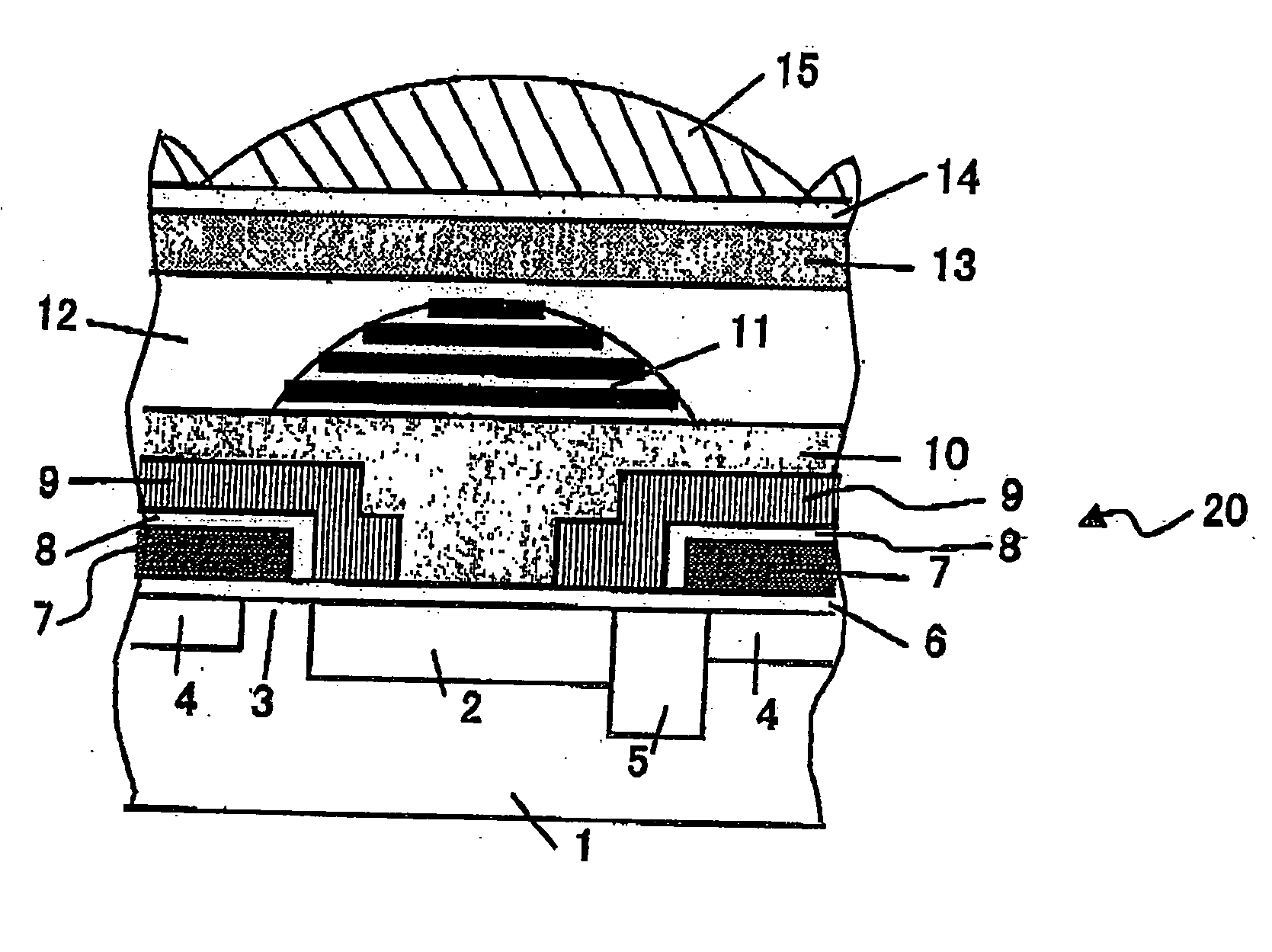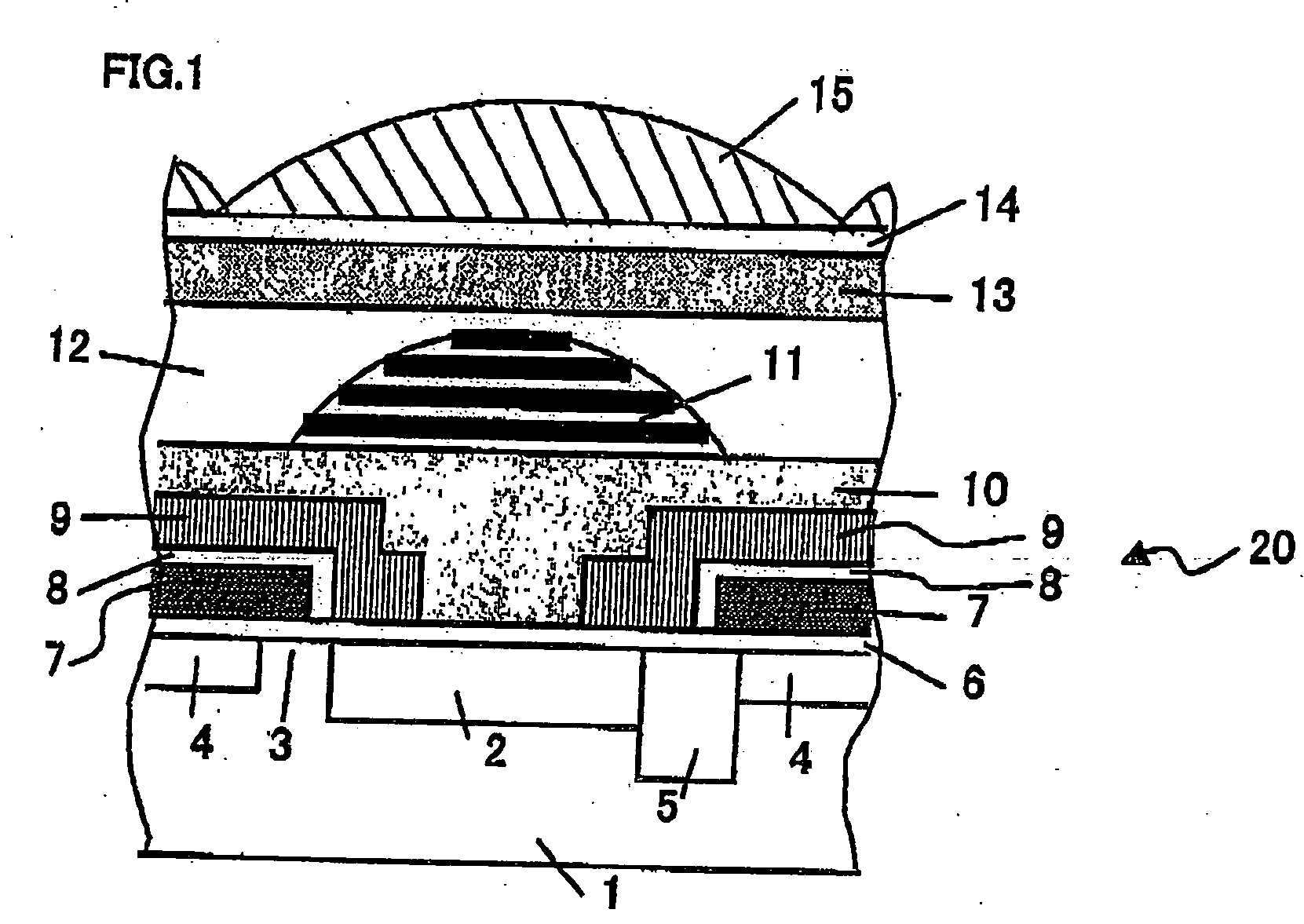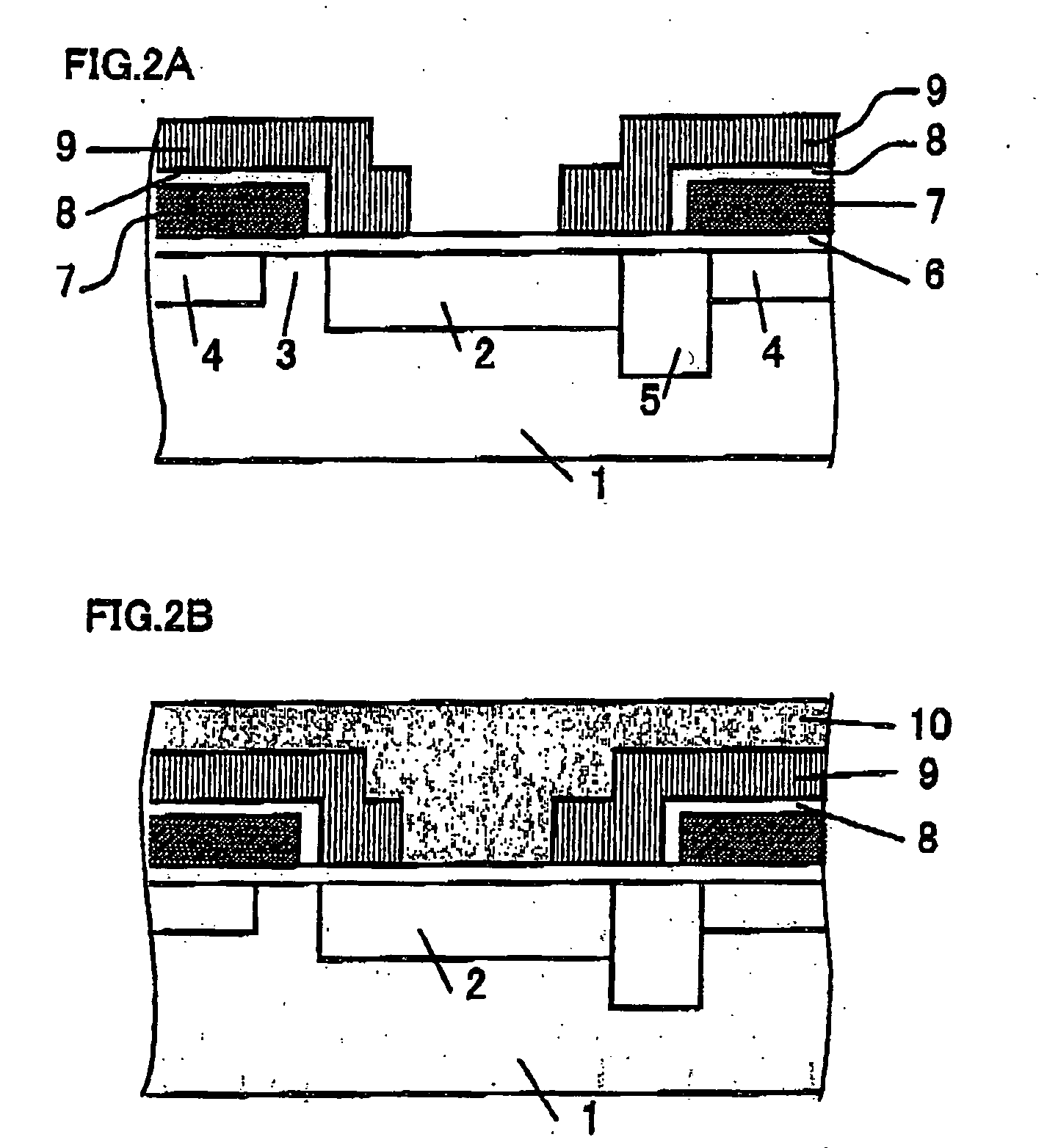Semiconductor device and method for fabricating the same
a semiconductor and film technology, applied in the field of semiconductor devices, can solve the problems of deterioration, crack or removal of film, difficult to acquire vivid images with low illumination, light receiving sensitivity, etc., to prevent uneven film thickness of interlayer lenses, prevent cracks or removal, good film thickness uniformity
- Summary
- Abstract
- Description
- Claims
- Application Information
AI Technical Summary
Benefits of technology
Problems solved by technology
Method used
Image
Examples
Embodiment Construction
[0059] Hereinafter, embodiments of a semiconductor device and a fabrication method thereof according to the present invention will be described. In the descriptions below, the embodiments of the present invention are embodied as a solid-state image sensing device and a fabrication method thereof. The semiconductor device according to the present invention includes not only a so-called solid-state image sensing device, for example, a CCD image sensor, a CMOS image sensor, a CMD, a charge injection device, a bipolar image sensor, a photoconductive film image sensor, a laminate type CCD image sensor, an infrared image sensor, but also any device which may be used as a light receiving portion or a light emitting portion in various apparatus, for example, a light receiving device produced in a fabrication process for a semiconductor integrated circuit, a light emitting device such as a light emitting diode, a light transmittance control device such as a liquid crystal panel, and the like...
PUM
 Login to View More
Login to View More Abstract
Description
Claims
Application Information
 Login to View More
Login to View More - R&D
- Intellectual Property
- Life Sciences
- Materials
- Tech Scout
- Unparalleled Data Quality
- Higher Quality Content
- 60% Fewer Hallucinations
Browse by: Latest US Patents, China's latest patents, Technical Efficacy Thesaurus, Application Domain, Technology Topic, Popular Technical Reports.
© 2025 PatSnap. All rights reserved.Legal|Privacy policy|Modern Slavery Act Transparency Statement|Sitemap|About US| Contact US: help@patsnap.com



